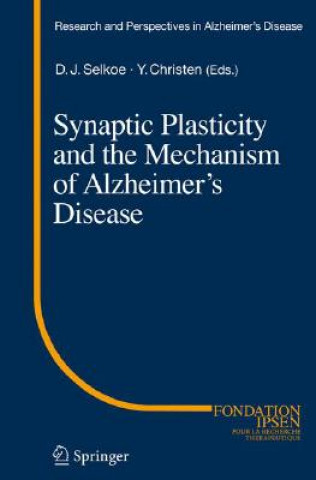
Kod: 05275223
Synaptic Plasticity and the Mechanism of Alzheimer's Disease
Autor Dennis J. Selkoe, Antoine Triller, Yves Christen
A biochemical hypothesis - that Alzheimer s disease (AD) is a progressive cerebral amyloidosis caused by the aggregation of the amyloid b-protein (Ab) - preceded and enabled the discovery of etiologies. This volume serves as a rec ... więcej
- Język:
 Angielski
Angielski - Oprawa: Twarda
- Liczba stron: 183
Wydawca: Springer-Verlag Berlin and Heidelberg GmbH & Co. KG, 2008
- Więcej informacji o książce

875.10 zł

Dostępna u dostawcy w małych ilościach
Wysyłamy za 12 - 15 dni
Potrzebujesz więcej egzemplarzy?Jeżeli jesteś zainteresowany zakupem większej ilości egzemplarzy, skontaktuj się z nami, aby sprawdzić ich dostępność.
Dodaj do schowka
Zobacz książki o podobnej tematyce
-

Master Pentatonic Scales For Guitar in 14 Days
71.26 zł -

Rosemariners
54.33 zł -23 % -

Plays in Chinese (3)
86.89 zł -

What's New in Cardiovascular Imaging?
407.45 zł -

Moose Mischief: A Pancake Surprise!
85.88 zł -

Female Cunningness and Male Deception in Jane Austen's 'Northanger Abbey' and 'Sense and Sensibility' and in Henry Fielding's 'Tom Jones'
182.65 zł -

Development Cooperation - Evaluation and New Approaches.
310.58 zł
Podaruj tę książkę jeszcze dziś
- Zamów książkę i wybierz "Wyślij jako prezent".
- Natychmiast wyślemy Ci bon podarunkowy, który możesz przekazać adresatowi prezentu.
- Książka zostanie wysłana do adresata, a Ty o nic nie musisz się martwić.
Więcej informacji o Synaptic Plasticity and the Mechanism of Alzheimer's Disease
Za ten zakup dostaniesz 509 punkty
 Opis
Opis
A biochemical hypothesis - that Alzheimer s disease (AD) is a progressive cerebral amyloidosis caused by the aggregation of the amyloid b-protein (Ab) - preceded and enabled the discovery of etiologies. This volume serves as a record focused on bringing together investigators at the forefront of elucidating the structure and function of hippocampal synapses with investigators focused on understanding how early assemblies of Ab may compromise some of these synapses. During most of the 20th century, neurodegenerative diseases remained among the most enigmatic disorders of medicine. The scientific study of these conditions was descriptive in nature, detailing the clinical and neuropathological phenotypes associated with various diseases, but etiologies and pathogenic mechanisms remained obscure. Beginning in the 1970s, advances in two principal areas biochemical pathology and molecular genetics combined to yield powerful clues to the molecular underpinnings of several previously "idiopathic" brain disorders. Among the classical neurodegenerative diseases, perhaps the most rapid progress occurred in research on Alzheimer s disease (AD). In disorders like Huntington s disease, amyotrophic lateral sclerosis and even Parkinson s disease, unbiased genetic screens, linkage analysis and positional cloning have identified causative genes that subsequently allowed the formulation of specific biochemical hypotheses. In sharp contrast, modern research on AD developed in the opposite order: the identification of the protein subunits of the classical brain lesions guided geneticists to disease-inducing genes, for example, APP, apolipoprotein E and tau. Thus, a biochemical hypothesis of disease - that AD is a progressive cerebral amyloidosis caused by the aggregation of the amyloid b-protein (Ab) - preceded and enabled the discovery of etiologies.§As progress in deciphering genotype-to-phenotype relationships in AD accelerated during the last two decades, it became apparent that the key challenge for understanding and ultimately treating AD was to focus not on what was killing neurons over the course of the disease but rather on what was interfering subtly and intermittently with episodic declarative memory well before widespread neurodegeneration had occurred . In other words, one wishes to understand the factors underlying early synaptic dysfunction in the hippocampus and then attempt to neutralize these as soon as feasible, perhaps even before a definitive diagnosis of AD can be made. This steady movement of the field toward ever-earlier stages of the disorder is exemplified by the recognition and intensive study of minimal cognitive impairment amnestic type (MCI; . And yet patients who die with a diagnosis of MCI have been found to already have a histopathology essentially indistinguishable from classical AD . Therefore, even earlier phases of this continuum are likely to become recognized, and these might show milder histopathology and might have biochemically, but not yet microscopically, detectable Ab species that mediate synaptic dysfunction. §This volume serves as a record focused on bringing together investigators at the forefront of elucidating the structure and function of hippocampal synapses with investigators focused on understanding how early assemblies of Ab may compromise some of these synapses.
 Szczegóły książki
Szczegóły książki
Kategoria Książki po angielsku Medicine Clinical & internal medicine Neurology & clinical neurophysiology
875.10 zł
- Pełny tytuł: Synaptic Plasticity and the Mechanism of Alzheimer's Disease
- Autor: Dennis J. Selkoe, Antoine Triller, Yves Christen
- Język:
 Angielski
Angielski - Oprawa: Twarda
- Liczba stron: 183
- EAN: 9783540763291
- ISBN: 3540763295
- ID: 05275223
- Wydawca: Springer-Verlag Berlin and Heidelberg GmbH & Co. KG
- Waga: 465 g
- Wymiary: 235 × 155 × 15 mm
- Data wydania: 11. January 2008
Ulubione w innej kategorii
-

Stop Autism Now!
103.72 zł -

Autistic Brain
79.02 zł -14 % -

NeuroTribes
79.73 zł -23 % -

PDA in the Therapy Room
102.21 zł -1 % -

Early Start for Your Child with Autism
73.48 zł -5 % -

Female Brain
52.01 zł -23 % -

You Can Fix Your Brain
104.93 zł -12 % -

Oxford Handbook of Neurology
209.87 zł -
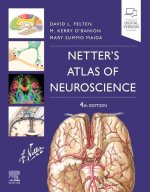
Netter's Atlas of Neuroscience
307.65 zł -7 % -

Women and Girls with Autism Spectrum Disorder
127.81 zł -

Aspergirls
84.67 zł -7 % -

Gut and Psychology Syndrome
102.41 zł -23 % -

Topical Diagnosis in Neurology
287.59 zł -

The Reason I Jump
47.07 zł -14 % -

101 Games and Activities for Children With Autism, Asperger's and Sensory Processing Disorders
70.45 zł -23 % -

Rowan's Primer of EEG
314.51 zł -

Parent's Guide to High-Functioning Autism Spectrum Disorder
84.67 zł -7 % -

Marriage and Lasting Relationships with Asperger's Syndrome (Autism Spectrum Disorder)
96.16 zł -1 % -

PEERS (R) for Young Adults
319.04 zł -
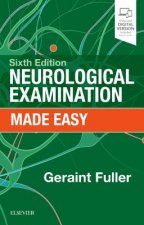
Neurological Examination Made Easy
129.23 zł -16 % -

Bobath Concept in Adult Neurology
337.19 zł -
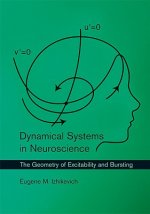
Dynamical Systems in Neuroscience
292.33 zł -
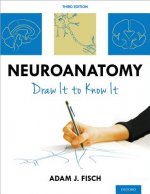
Neuroanatomy
484.07 zł -

Neuropsychological Assessment
945.16 zł -
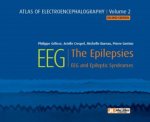
Atlas of Electroencephalography -- Volume 2
657.46 zł -

Atlas of Electroencephalography -- Volume 1
657.46 zł -

Spectrum Women
102.21 zł -1 % -

Homeopathy and Autism Spectrum Disorder
108.06 zł -1 % -

Standard Electroencephalography in Clinical Psychiatry - A Practical Handbook
321.57 zł -
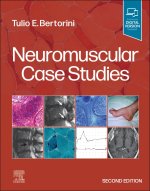
Neuromuscular Case Studies
812.40 zł -9 % -

Geeks, Genes, and the Evolution of Asperger Syndrome
101.91 zł -4 % -

All Birds Have Anxiety
69.55 zł -4 % -

Cerebral Small Vessel Disease
816.13 zł -

Neuroscience of Pain, Stress, and Emotion
555.24 zł -

Social Skills Training for Children with Asperger Syndrome and High-Functioning Autism
426.51 zł -

22 Things a Woman with Asperger's Syndrome Wants Her Partner to Know
66.83 zł -1 % -
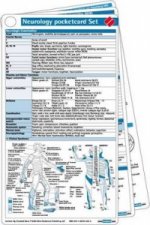
Neurology Pocketcard Set
32.25 zł -15 % -

Polyvagal Theory
203.42 zł -4 % -

Complete Guide to Asperger's Syndrome
125.70 zł -4 % -

22 Things a Woman Must Know If She Loves a Man with Asperger's Syndrome
66.83 zł -1 % -

Neurofitness
144.15 zł -14 % -

Mind Diet Cookbook
79.32 zł -

In a Different Key
79.73 zł -23 % -
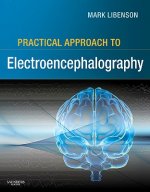
Practical Approach to Electroencephalography
429.13 zł -

Autism Spectrum Guide to Sexuality and Relationships
90.31 zł -1 % -

Brainwashing
69.75 zł -4 % -

Schema Therapy
288.80 zł -

Pretending to be Normal
93.64 zł -5 % -

Engaging Autism
85.88 zł -4 %
zadowolonych klientów
Od roku 2008 obsłużyliśmy wielu miłośników książek, ale dla nas każdy był tym wyjątkowym.
Copyright! ©2008-24 libristo.pl Wszelkie prawa zastrzeżonePrywatnieCookies


 21 milionów książek
21 milionów książek Dostawa 10.99 zł
Dostawa 10.99 zł (32) 444 93 66 (8-15.30h)
(32) 444 93 66 (8-15.30h)